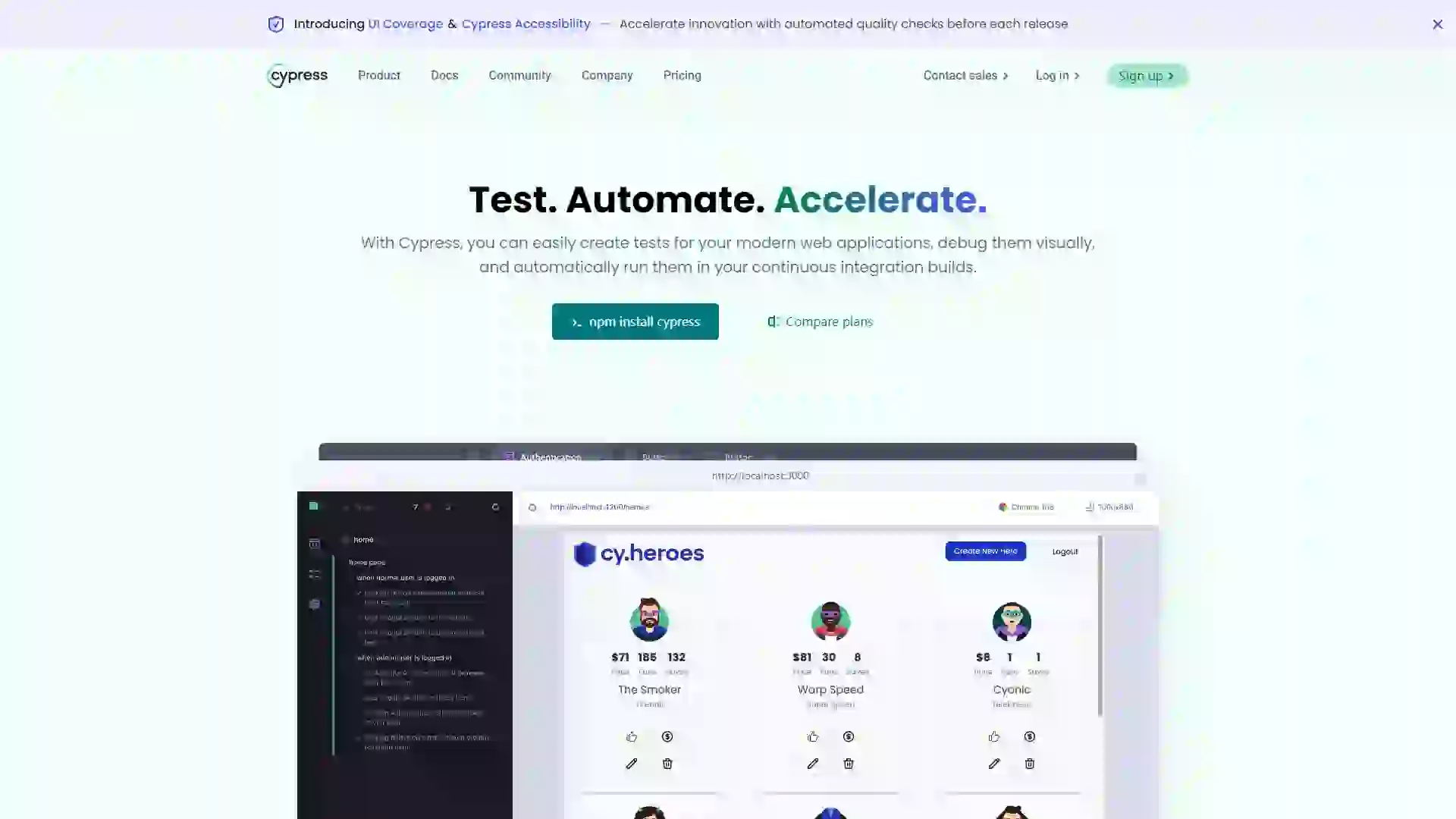Cypress: The Ultimate End-to-End Testing Framework
Summary
Cypress is an advanced end-to-end testing framework meticulously crafted for modern web applications. It offers a robust and comprehensive testing solution, empowering developers to swiftly and reliably validate various aspects of their applications, ensuring seamless functionality and performance.
✨ Features
- Live Reloading and Debugging: Cypress provides real-time live reloading, enabling developers to instantly witness changes during testing. It also includes powerful built-in debugging tools that streamline the process of identifying and resolving issues.
- Automatic Waiting: Cypress intelligently waits for elements to load and actions to complete, eliminating the need for manual wait times. This feature enhances test stability and efficiency, ensuring smooth and reliable testing.
- Cross-Browser Testing: Cypress supports multiple browsers, ensuring compatibility and consistency across different environments. This capability is crucial for delivering a uniform user experience.
- Rich Plugin Ecosystem: Cypress boasts a vibrant ecosystem of plugins and extensions, making it easy to integrate into existing development workflows and expand testing capabilities.
🎯 Use Cases
- Frontend Development Testing: Cypress is ideal for frontend developers, allowing them to conduct real-time testing during development. This ensures code quality and functional correctness, reducing the risk of bugs and issues.
- Continuous Integration/Continuous Deployment (CI/CD): Cypress seamlessly integrates into CI/CD pipelines for automated testing. This ensures stability and reliability with each deployment, enhancing the overall development process.
- Cross-Browser Compatibility Testing: Cypress is used to rigorously test application performance across different browsers, ensuring a consistent user experience regardless of the environment.
- Complex Interaction Testing: Cypress excels at testing complex user interactions and dynamic content, ensuring application stability under various conditions.
⚠️ Drawbacks
- Steep Learning Curve: Cypress may present a steep learning curve for beginners, as mastering its advanced features requires time and dedication.
- High Resource Consumption: Cypress may consume significant system resources during test execution, particularly during large-scale testing. This can impact performance and requires adequate system capacity.
- No Support for Multi-Tab Testing: Cypress currently does not support testing multiple browser tabs simultaneously, which may be a limitation in certain testing scenarios.
❓ FAQ
Q1: What are the main features or benefits of Cypress?
A1: Cypress offers live reloading and debugging, automatic waiting, cross-browser testing, and a rich plugin ecosystem. These features enable developers to conduct efficient, reliable, and comprehensive testing, ensuring high-quality applications.
Q2: How does Cypress compare to other testing frameworks?
A2: Cypress stands out with its real-time capabilities and automatic waiting, which significantly enhance test stability and efficiency. Its rich plugin ecosystem and seamless integration with CI/CD pipelines also provide a competitive edge over other frameworks.
Q3: Is Cypress suitable for beginners or professionals?
A3: While Cypress offers powerful features that appeal to professionals, its steep learning curve may pose challenges for beginners. However, with dedication and practice, even novice users can master its capabilities and benefit from its robust testing solutions.
